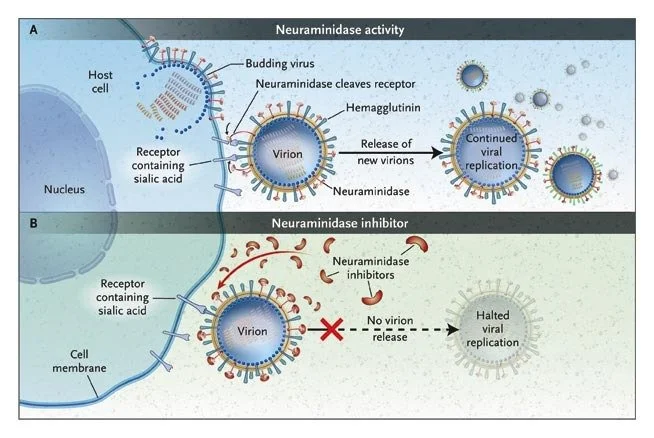How Receptor-Mediated Endocytosis Contributes to Influenza Pathogenesis
Receptor-mediated endocytosis is a specialized form of endocytosis in which molecules of interest are brought into the cell by way of receptor-coated vesicles. Upon binding of a ligand to its receptor, adaptor proteins from the cytosol associate with this complex to help determine whether or not to induce membrane curvature and therefore vesicle formation. Proteins of the BAR family facilitate curvature upon the adaptor proteins' approval. The invagination of this vesicle causes recruitment of clathrin, which binds to the adaptor proteins and coats the vesicle.
The coated vesicle disassociates from the membrane with the help of dynamin, and rides down microtubules to reach an endosome. The endosome is an acidic compartment that partially denatures the receptor and ligand, thus facilitating disassociation and expulsion of the ligand into the vesicle-endosome complex.
The receptor and ligand, now separated, can have many fates.
The vesicle-endosome complex can form via two methods: kiss-and-run fusion or full fusion. Both are diagrammed below.
The flu virus has hemagglutinin, which binds to the sialic acid on the host cell. Neuraminidase (on the viral particle) cleaves the receptor between these two compounds after receptor-mediated endocytosis of the viral particle. The low endosome pH changes the conformation of hemagglutinin, allowing for viral genome release. Neuraminidase inhibitors such as Tamiflu are thus able to prevent viral genome release, and are used to curb viral infection.
And that, my friends, is how receptor-mediated endocytosis plays a part in the flu!
Resources that helped me understand this concept:
https://www.youtube.com/watch?v=Hy4DKmJvC1U- an overview of receptor-mediated endocytosis.
https://www.youtube.com/watch?v=4E20T34DBgA - an overview of viral entry/exit of cells.





